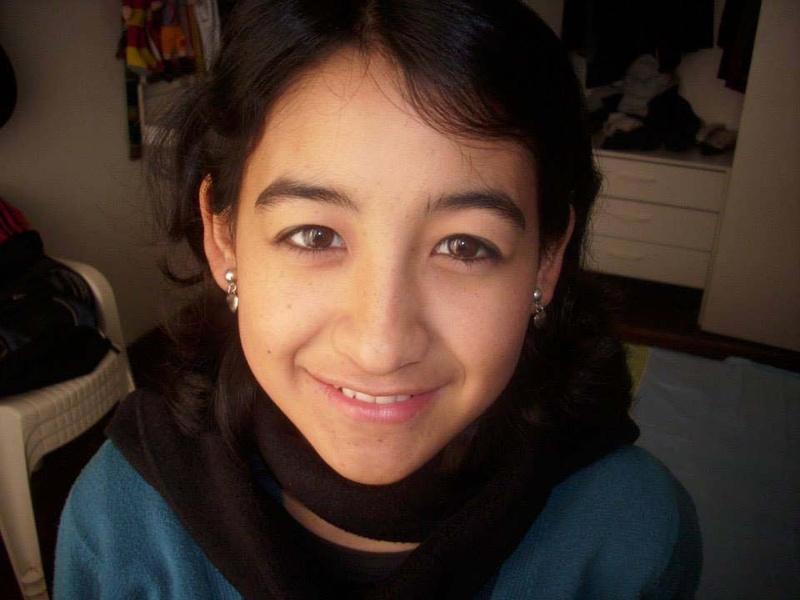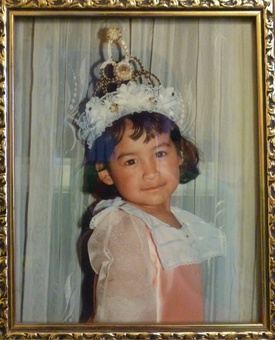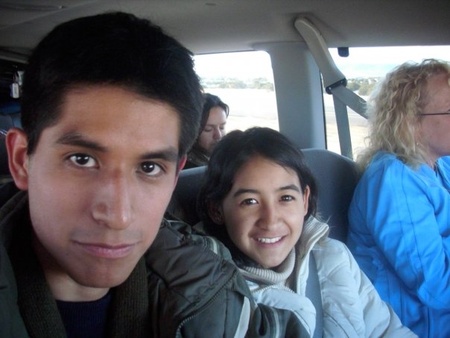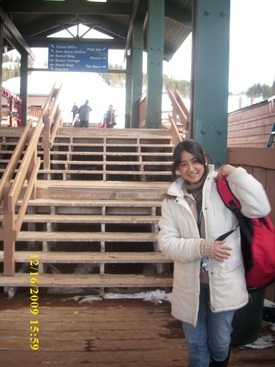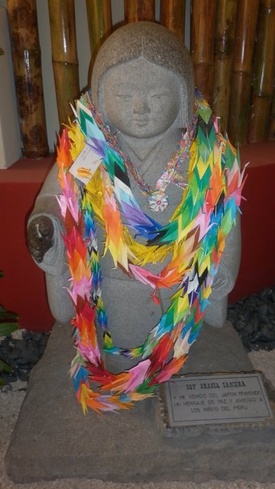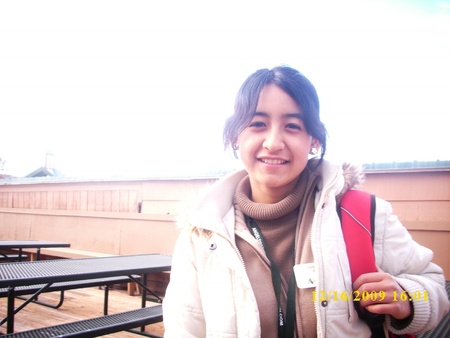Since I can remember, like everyone who was born in Peru in the nineties, Japan has been very present in my life. How can I forget the first time I tuned in and watched Dragon Ball or Saint Seiya for the first time, or even Dekirukana or Puppet Theater . Being born and living in Jesús María, near the Peruvian Japanese Cultural Center, also made me very excited since I was little to learn more about this interesting culture. However, it would not be until some time later that I would end up learning much more about it thanks to a very nice person and his “nikkei” [日系] family.
It was upon entering San Marcos, like every young person who begins to know the world, that I began to have spaces to develop myself in things that I liked, one of those things at that time was to perfect myself in several languages, from English or French, even Chinese and, why not, Japanese. It was in one of those language classes that I met a Nikkei girl named Cynthia, with small eyes, a tender appearance and a super contagious laugh, one of those very few people who always seem to live with joy, who laugh in good spirits at everything. and who face life with a big and contagious smile and happiness.
I don't know how it happened but for those who could see it as something impossible, a great friendship arose between the two and, little by little, almost as if unintentionally, also a great reciprocated love. As you can imagine, it was undoubtedly a very beautiful stage, alongside such a happy and even joking person, very funny too. She studied psychology, I studied economics. And although it is perhaps little known, both areas are as complementary as they are incompatible at the same time. Although both study people's decision-making, each has its own position regarding how emotional or rational people are. As you can imagine, conversations with her, even on topics as serious as each other's careers, ended up being fun too. We talked about so many things, I remember he once told me how much he liked reptiles, iguanas and turtles, especially. “How strange!” I thought. “Yes,” he told me, “they move so slowly that they enjoy life more,” he told me, “they don't live in such a hurry.”
The first time I went to their house, I was greeted at the door by their also smiling “obachan” [お婆ちゃん] and “okasan” [お母さん]. “How curious!”, I told myself, he calls them like that instead of grandma and mom. Then his father (Mr. Renzo) would come home from work and sit next to his mother (Mrs. Hachita). Among so much laughter at home, I must admit that at first his dad seemed like someone serious and annoying, and I couldn't have been more wrong, because once he met me he started making jokes and also telling his many stories and jokes. Then, everyone would invite me to lunch or dinner, and suddenly I was even more curious to hear the family in chorus saying their “itadakimasu” [頂きます]. Then someone would ask if the meat they had bought had not been very “takai” [高い], or if there was still enough “okane” [お金] for the week. How curious, I could have read a lot in books, but then I realized how much I still had to know about the culture that I admired so much.
His grandmother, named Teresa Tanaka Tagomori, was very happy with me and always told me: “Marco, you know a lot about Japan,” even though I didn't think so. Several of the visits to her house were very joyful, her grandmother was very talkative and liked to tell her life stories. She told us how her mother had come to Peru from Fukuoka, how her grandmother had been the winner of a beauty pageant there in Japan and about the stories of a princess who was her ancestor and a village with a palace that kept a sword, which still waiting for its owner. He also told us about his work at Peluquería Todo (a job, I know today, that was very common among the Nikkeis of that time). It ended with some story from Japanese folklore, be it the beautiful Kaguya Hime [かぐや姫], the powerful Momotaro [桃太郎], or the very interesting time travel story of Urashima Taro [浦島太郎]. Oh, and to top it off, given my great curiosity about Japan, Mrs. Teresa told me that I should meet Uncle Tadashi who, if I remember correctly, she told me had been Secretary General of the Peruvian Japanese Cultural Center.
Life with Cynthia was very happy, with her family, eating mochis [餠] or obentos [お弁当], as well as so many delicious things about our Peruvian food. Curiously, and despite having perceived the Japanese influence in the family, perhaps I had left aside for a moment that in the end we were all Peruvians too. Cynthia was a great cook (thanks to her aunt Roxana, as she told me), and she was always very active, both in her psychology studies at the university and in her work practices, at that time in a school for special children, where He had become very attached to the community of deaf children, which is why he was learning sign language.
Perhaps because of all his activity, he had also lost track of some activities that he was sure he might like. One of these, without a doubt, was the Matsuri , an event for the Nikkei community and friends that takes place annually in November at the AELU in Lima. Curiously, when I asked him, I was surprised that he had never been. Maybe it was a good time to go and enjoy the beauty of the event, one full of food, concerts and fireworks too, the famous hanabi [花火]. It was undoubtedly a very beautiful Matsuri , but perhaps one of the moments that I remember most began with a song that began to play played by Ryukyukoku Matsuri Daiko [琉球國祭り太鼓], I don't remember precisely the song but it played right at the moment in which she noticed a replica of a sakura tree. “Do you know what it means?” he asked me. “Sure,” I said. They are the flowers of the cherry tree. She smiled and told me: “Yes, they are very beautiful flowers that bloom early, announcing spring, but just as they arrive quickly, they leave just as quickly. They are very beautiful and valuable, because of how fleeting they are. In a way, they are a reminder of how beautiful life is, but also how fleeting a person's life is throughout history.” He looked at me and smiled, we had to go back, the fireworks were about to start.
November had ended, December arrived and with it our trip to the United States, as part of a Work & Travel program. Things in life, not only had we managed to be accepted by the same resort, but we also managed to be accepted to work in the same area of the resort: the ski school. Our time there, working together, cooking, learning to ski so we could later teach the kids, it was all a lot of fun, without a doubt.
One day in January, among the objects that are sometimes left by lost children (and that are saved and later returned, obviously), we found a Japanese story. “Oh look!” I said. “says “Sadako and the 1000 paper cranes.” He looked at me and smiled, he told me that it was not just a story, but it was a true story. Make a thousand paper cranes and you can make a wish and it will come true. “How cool, then it's something like the dragon balls!” I thought. Everything was illusion back then, joy without a doubt, until one afternoon at the end of January, which I think I still remember.
We were going to go to dinner that night, we went down to the main area of the resort and she went to the bathroom. And although normally he didn't delay, this time he didn't return. I can still see those moments, painful without a doubt, and confusing for me and my life. Cynthia had fainted, she had suffered a stroke. They tried to do something, to the point that local doctors took her by emergency helicopter to the main city. However, perhaps everything had already been written, and perhaps I should have known. It is not usually very pleasant to write about these things, however, part of life is its end and perhaps even the end we believe ends up not being a definitive one. Cynthia suffered a stroke and along with her cousin and her father, who were able to come quickly after the event, I still managed to see her breathing, almost as if she were asleep. There wasn't much time for more, but between the three of us we agreed on something that she undoubtedly would have also wanted: there was the possibility of extending her life in a certain way through her donation to some patients in various parts of the United States who at that time So they anxiously awaited the fortune of being able to find a donor who could allow them to continue living, several of them, boys, girls and young people as well.
Returning to Peru meant a very important change, things were never the same again, without a doubt. My family, especially my sister, supported me a lot and we managed to assemble 1,000 paper cranes, which accompanied Cynthia on her farewell here. About desire? Perhaps it is a bit redundant to say it, perhaps for some it is something that was never fulfilled. However, I am one of those who thinks that these wishes do come true.
A few weeks later, a letter arrived at my house and when I opened it, I understood that everything had somehow made sense. It was perhaps at that moment that I began to return to life and value it again as it should be. The letter was from a little boy, sent through the entity in charge of the hospital's donation program. It was a letter of thanks; In it, he and his mother wrote that they were very sorry for the loss I had of a loved one, that they were very sorry, but that, if they could help me in any way, they wanted to tell me how happy the child felt after the operation that had allowed him improve their heart, and how infinitely grateful they were to me and to the family of the person who had been able to offer their son a new chance at life. I think I smiled and a tear ran down my cheek. Not only was the boy happy, but he had once again regained the will to live not only for himself, but also for his pets, an iguana and a turtle whom he loved very much, precisely because of how slow they are and how much they enjoy life too.
Epilogue:
Cynthia Fiorella Salas Tairaku died very young at 22 years old, it will soon be 10 years since. Sometimes life is capricious and does not give one enough time to show achievements that one would otherwise have achieved. Being very young, that was undoubtedly the case for her. However, even though life is somewhat capricious, it also gives everyone the opportunity to transcend through others, either through a spiritual mark left in some, as well as through the physical gift of life to allow the extension of that of others. This post is dedicated to his memory, in commemoration of the 10 years since his departure, and to his family, who somehow ended up adopting my sister and me as their children, and with whom my own family still maintains a very strong bond. As far as I'm concerned, if I preserve something from Cynthia, it is her joy and desire to live and be happy. Currently, I always try to live like this, happy, always in contact with my family and my girlfriend Isabel, to whom I am also very grateful for all the love and understanding given to me and for the great unconditional support she gives me every day. to improve myself and always be happy.
© 2019 Marco Carrasco Villanueva


